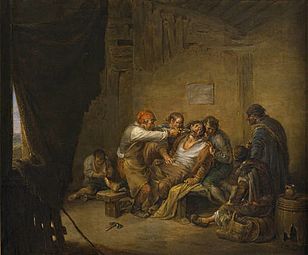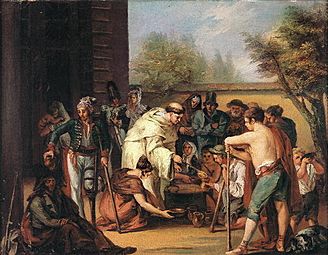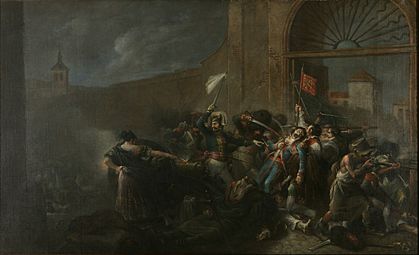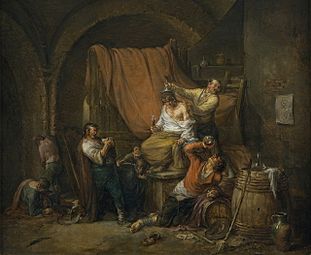Leonardo Alenza facts for kids
Leonardo Alenza y Nieto (born November 6, 1807, in Madrid, Spain – died June 30, 1845, in Madrid) was a Spanish painter and engraver. He was known for his art in the Romantic style. He was also part of the Costumbrista movement, which focused on showing everyday life and customs.
Contents
Biography
Early Life and Education
Leonardo Alenza's father, Valentín, worked for the government. He was also a poet who had some of his poems published. Leonardo's mother passed away when he was only about six or seven years old.
In 1817, his father got married again. Leonardo's stepmother was only eleven years older than him. Soon after, his family moved to a quieter street. It was near a Jesuit convent, where he likely started his higher education.
Becoming an Artist
In 1819, when he was 16, Leonardo joined the Academia de San Fernando. This was a famous art school in Madrid. He first studied with painters like Zacarías González Velázquez and José Aparicio. He also learned from an engraver and a sculptor. He finished his studies there with a well-known artist named José Madrazo.
Important Artworks
Leonardo stayed connected to the Academy until 1833. That year, the city of Madrid asked him to paint a special picture. It was an allegorical painting about Isabella becoming Queen. She was only three years old at the time.
The next year, he created a cenotaph to honor the late King Fernando VII. A cenotaph is like a monument for someone whose body is buried somewhere else. This artwork had five panels painted in grisaille, which means it looked like it was made of shades of gray.
Working on Illustrations
In 1838, Leonardo began drawing for a magazine called Semanario Pintoresco Español. It was published by Ramón de Mesonero Romanos. He also showed some of his "capriccios" at the Academy. Capriccios are imaginative artworks, often showing fantastical scenes.
Two years later, he helped the Semanario magazine again. He created illustrations for a new edition of the novel Gil Blas. He also illustrated the complete works of a writer named Francisco de Quevedo. Besides this, he made decorations for a popular place called Café de Levante.
Later Years and Health
In 1842, the Academy gave him a special award. He was named "Académico de Mérito" for his painting of David cutting off the head of Goliath. This would be his last big artwork.
Leonardo had been suffering from tuberculosis for several years. This was a serious lung illness. Even though he was very sick, he managed to teach as a professor for a few months.
Around this time, he was living in a cow barn. He believed that the air there would help him get better. Sadly, nothing worked. He passed away in 1845 when he was only 38 years old. By then, he had become very poor. His friends had to step in to make sure he wasn't buried in a common grave.
Other selected paintings
-
The Triumph of Bacchus
See also
 In Spanish: Leonardo Alenza para niños
In Spanish: Leonardo Alenza para niños






